ChartierDalix Architects redesigned the former Lourcine barracks – located in Paris’ 13th district and comprised a parade ground with accompanying military buildings erected in 1875 – so as to install University of Paris I elements such us a library, a lecture theatre, classrooms and offices within the old buildings and in basement levels under the parade ground.
-text by the authors
The project aims to make the most of this Parisian heritage, taking a precision approach that will as far as possible retain the existing spaces and preserve the historic character of the site. ChartierDalix is seeking to adapt the project and its new activities to the buildings without erasing their past. The parade ground retains its central, unifying and symbolic role, as a landscaped forecourt sloping down to frame the new access to the gallery and lecture theatre. Lecture and classrooms are inserted into the existing buildings, making the most of their spatial qualities (ceiling heights, noble materials).
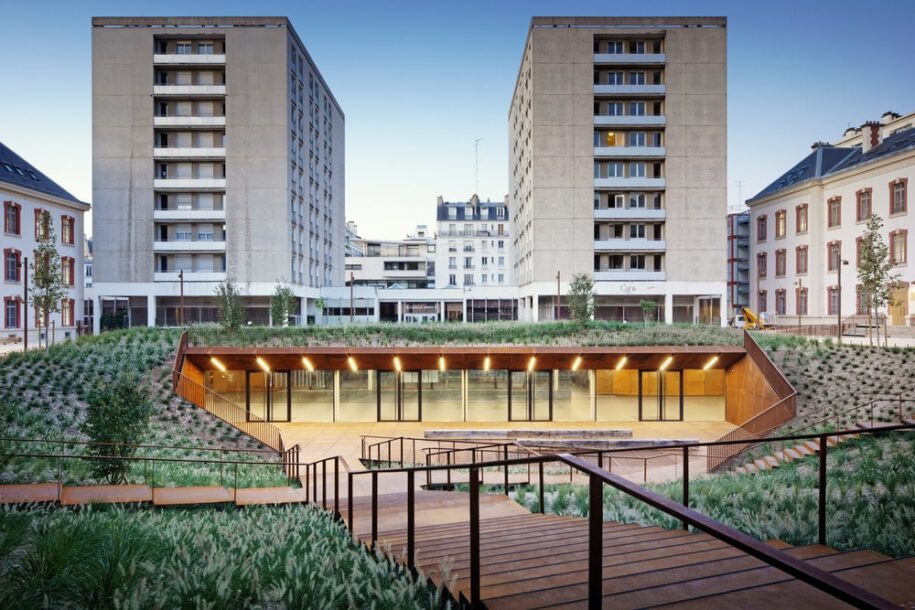
“Building a city on a city” has long been the standard approach to urban renewal. Our modernity has largely ignored and further complicated this practice that is now coming back all the more strongly due to the economic realities of construction being challenged by the severity of environmental issues. Rehabilitating and preserving existing buildings, even over and above considerations of heritage, is becoming a viable means of saving energy and sobriety, a source of reusable materials and a great opportunity to discover new uses resulting from conversion. Entering a building with its past life and its history, its previous uses, means imagining new stories to tell based on older tales and the richness of their promise.
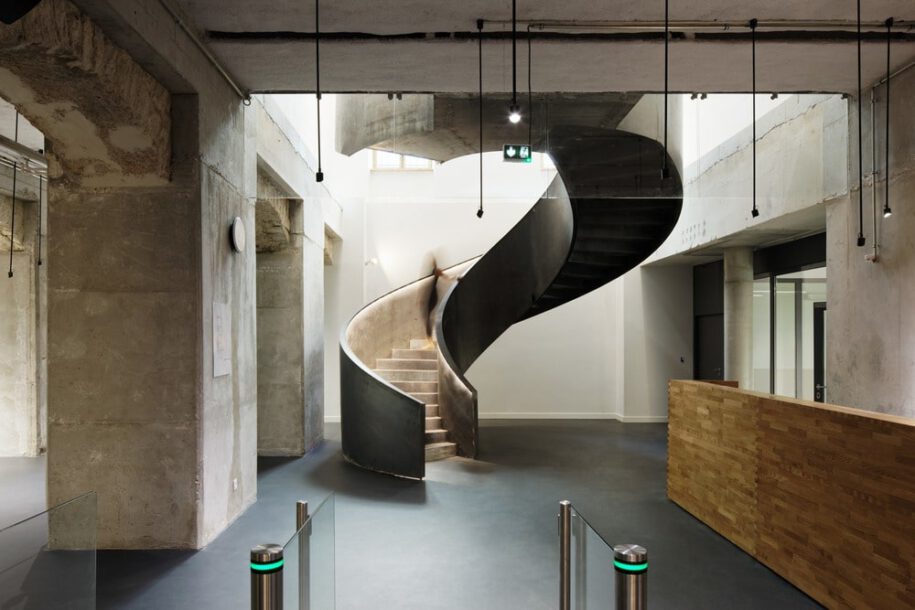
That is why we like to use the term “Metamorphosis” rather than rehabilitation: for us, it means building on the old to create something new and richer still than what might have been preserved.
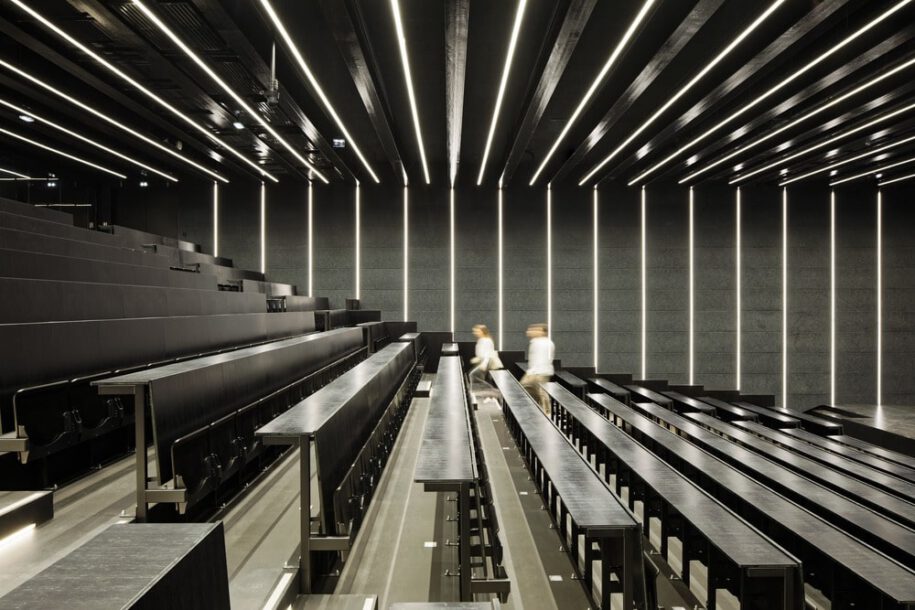
The project to transform the Lourcine barracks in the 13th Arrondissement of Paris is ambitious and innovative, due to both its scale and above all to the new relationship it creates with the existing buildings. In the heart of a very built-up and innervated district where the barracks has hitherto formed a distinct area, opening up the site to its immediate environment helps to tell those new stories. This evolution is based on an approach to the redevelopment of Parisian heritage, which in this case is envisaged not so much as a museum exhibit frozen in time, but as a means of regenerating the city, capable of breathing new life into the district.
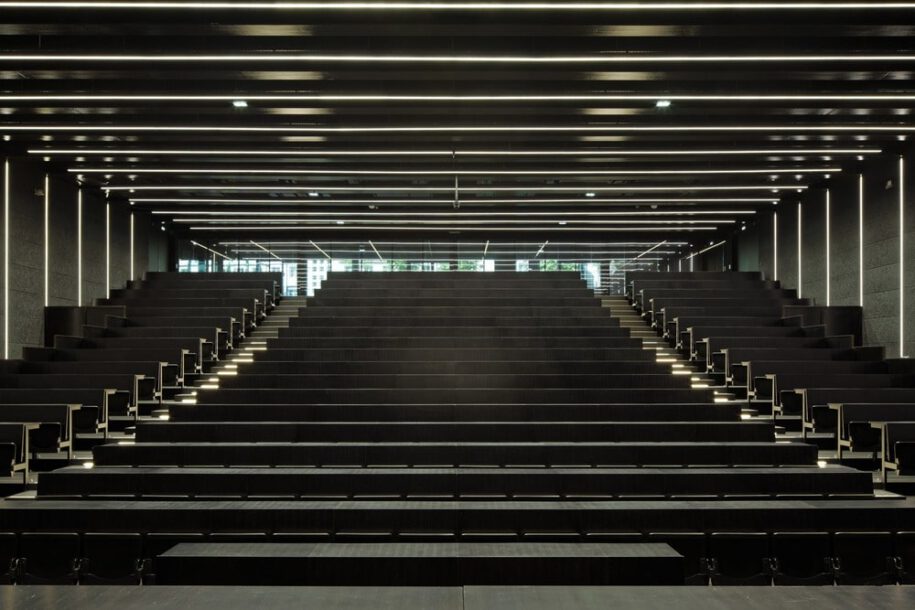
A military site at the heart of urban planning in Paris in the twentieth century
While this had been a military site since well before the French revolution, it has been in its current configuration since the end of the nineteenth century. The topography of the land in the Lourcine barracks presents a flat area between the parade ground and Boulevard de Port Royal and a slight slope towards Rue de la Glacière, but on the eastern side Rue Broca (an ancient medieval lane) is almost five metres lower.This allows for natural light to enter the basement floors of building 2 through large windows with a major foundation. This topography bears witness to the major earthworks and development undertaken in the nineteenth century.
In the centre, a large, rectangular parade ground planted with trees and surrounded on both sides by substantial barracks (buildings 1 and 2), each consisting of a central portion with wings at either end. These two original buildings were doubtless built in two phases using dressed stones, rubble and brick with a wooden frame and a slate roof according to a classical architectural model.
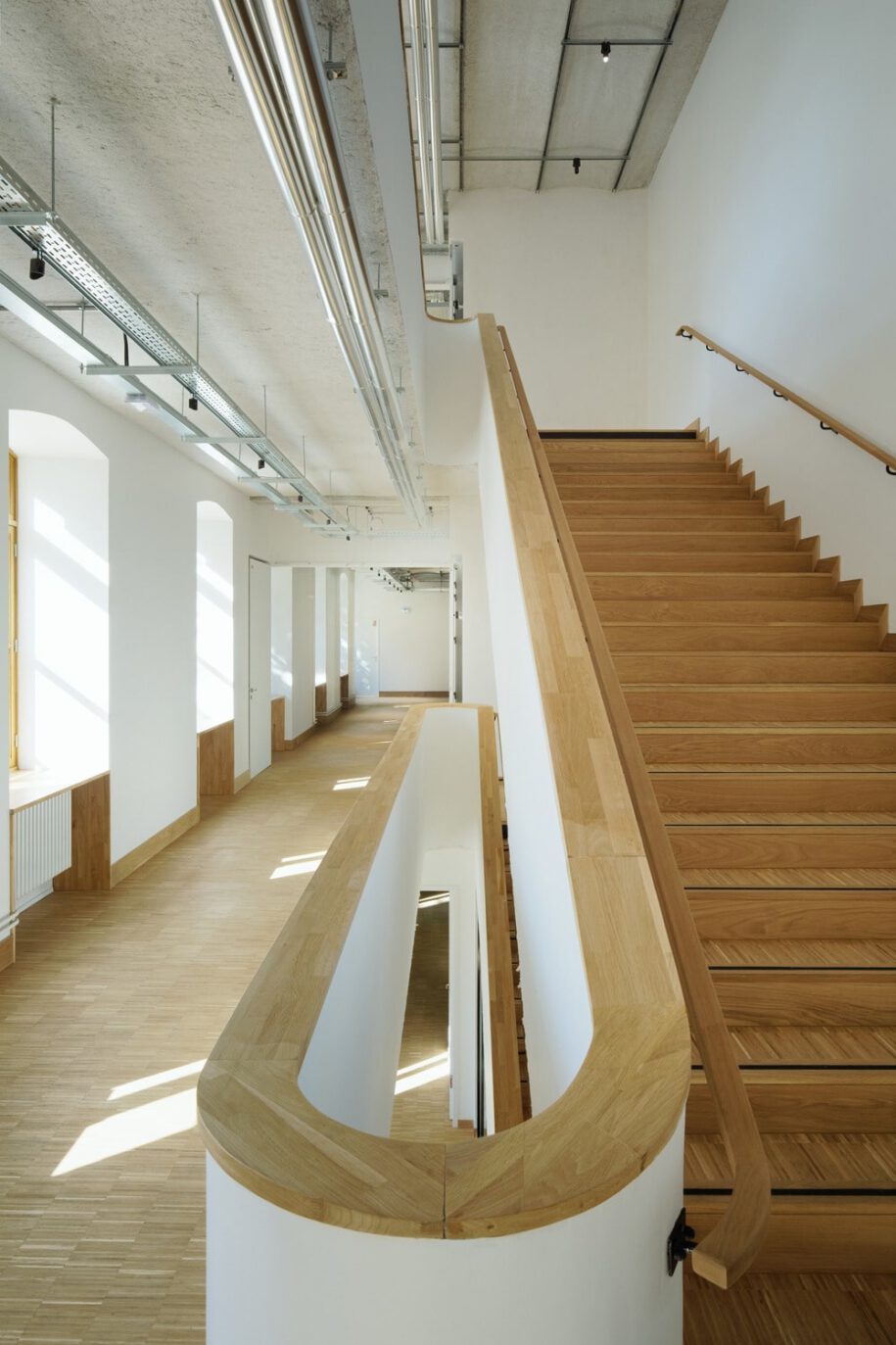
The site evolved in the second half of the twentieth century with the demolition of buildings facing Boulevard de Port Royal and Rue Saint Hippolyte and the construction of two imposing buildings maintaining the composition of the north / south axis. On the Saint Hippolyte side, a two-floor car park was created under the building up to the level of the slope and protruding into the parade ground.
A university teaching and research programme on a military site
The site of the Lourcine barracks has evolved considerably, becoming a set of office buildings and accommodation, but keeping its original form around the old parade ground and its major north / south axis. The two military buildings have been preserved both in terms of their volume and a large part of their internal layout.
The redevelopment plans include the installation of a part of the Law Faculty of the Université Paris 1 (teaching and research facilities, a library and central copying room) in buildings 1 and 2, and in part of the basements under building 3.
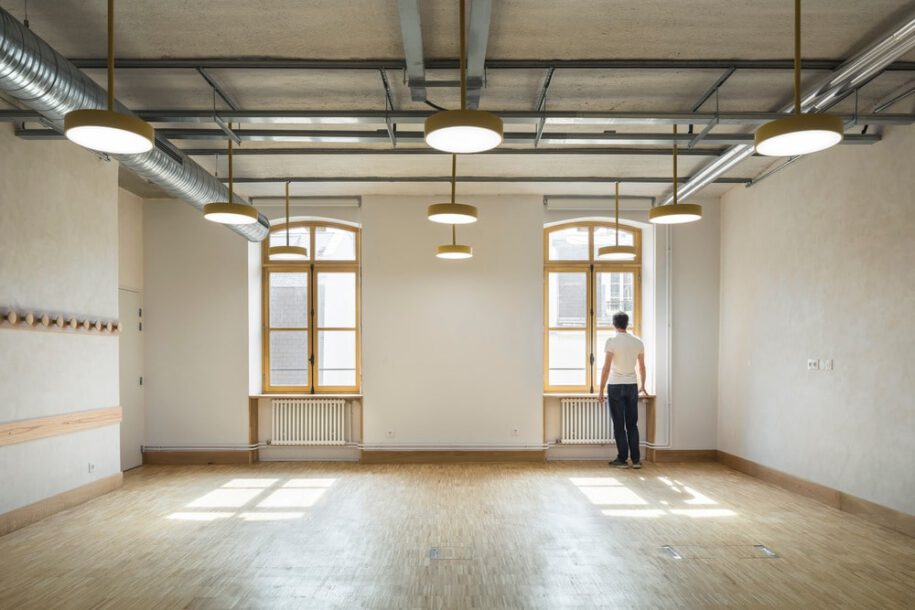
The challenge for the project is to preserve a precious heritage that bears witness to the urban history of this district while altering it as little as possible. The idea is to change the organisation of the barracks buildings to perfectly suit their new intended functions.
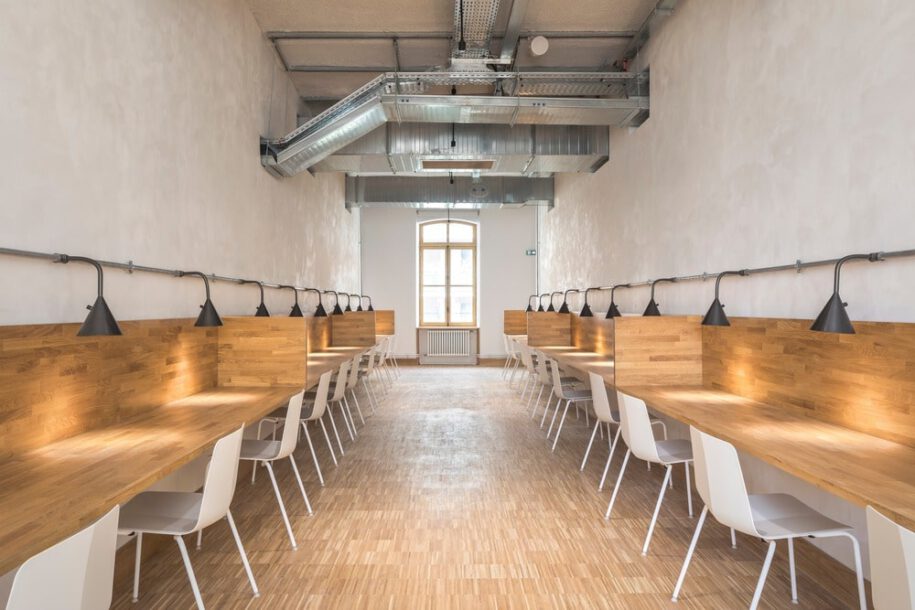
Work on these buildings is carefully targeted and limited to the interior; the envelope remains almost untouched apart from altering the size of the doors leading to the outside to comply with modern standards but within the existing clearance. The works have been planned to ensure that the rough finishing leaves the existing structure and the nobility of the original materials visible. The internal façades are revealed by generous walkways, while the height is emphasised by shafts that show off the existing volumes.
Re-establishing the strategic function of the central square
The co-existence of different uses, namely the proximity between the future premises of Paris 1, the military accommodation and the rooms for students taking preparatory classes make the square something of a challenge, a place where flows both converge and separate, it must make it possible to preserve the overall sense of the site while avoiding any undesirable confrontations between users.
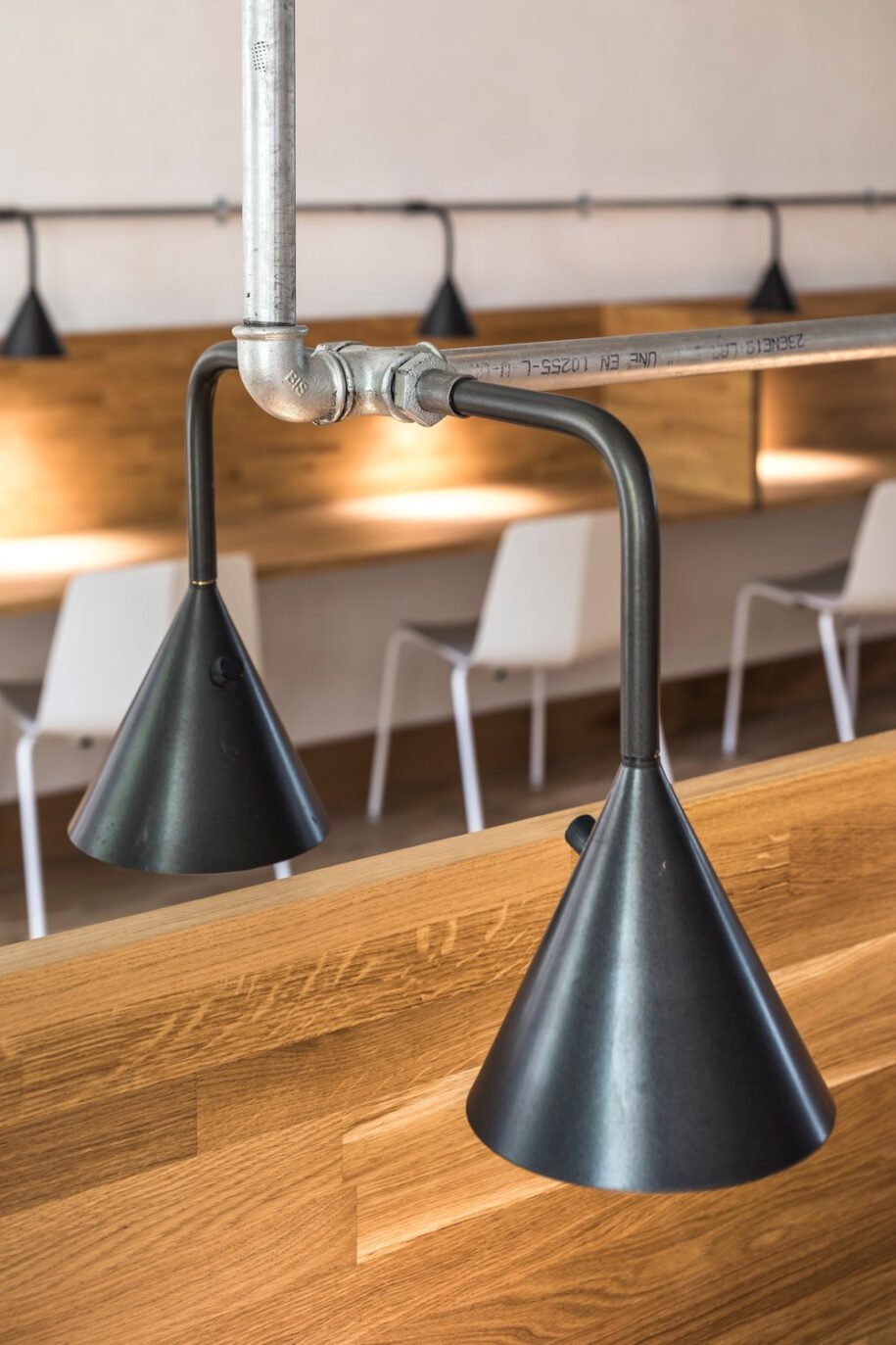
The square must not therefore be “built”, but rather restored: that is why the placement of the reception area represents a particularly sensitive feature of the project. While giving the site its overall sense and cohesiveness, the location of the reception area calls out, offers guidance and plays the part of an attractive, functional and pleasant space. This reorganisation makes it possible to add value to the centre in terms of both landscaping and functionality.
Envisaged as an interior geography, it links together different topographic levels through folds in the ground or gentle dips with minimum interference. Furthermore, the symmetrical layout of the whole enables a visual link to be envisaged that runs right through the plot revealing the depth of the whole area from Rue Saint Hippolyte to Boulevard de Port Royal.
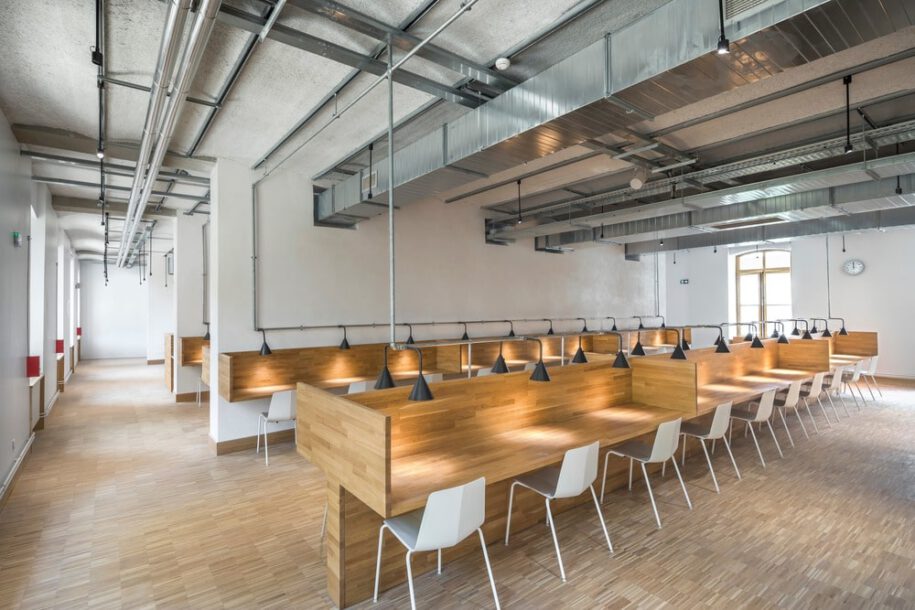
Materials and interior design choices
The qualities of the existing site are magnified by the complete freeing up of the spaces: the simple application of flocking on the underside of the arches (acoustics and fire prevention), as well as the complete absence of false ceilings, thus revealing the technical installations, helps to maintain the existing volumes.
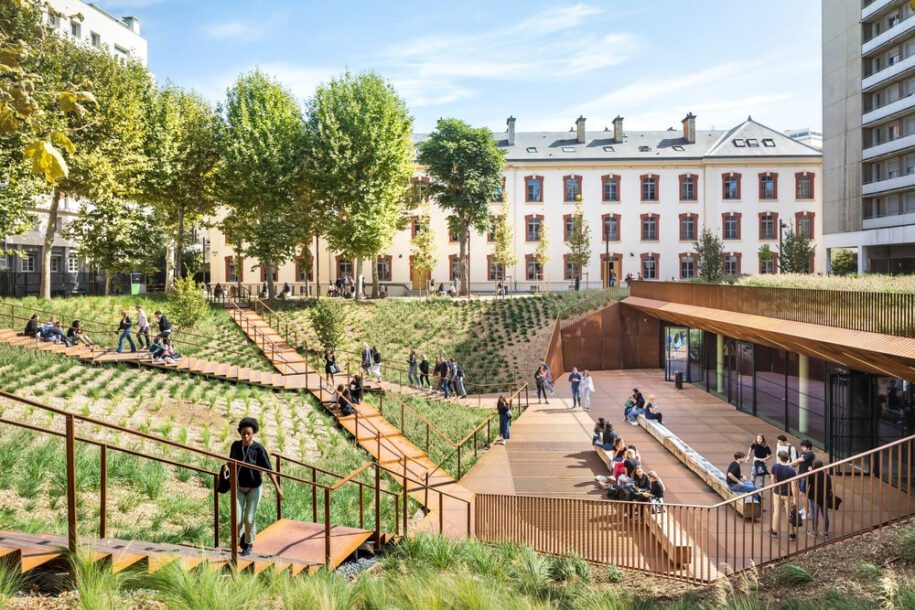
A certain “brutalism”, linked to the visibility of all the utility networks, contrasts with the fine details of the made- to-measure furniture and the nobility of the raw materials (steel, solid oak, floorboards).
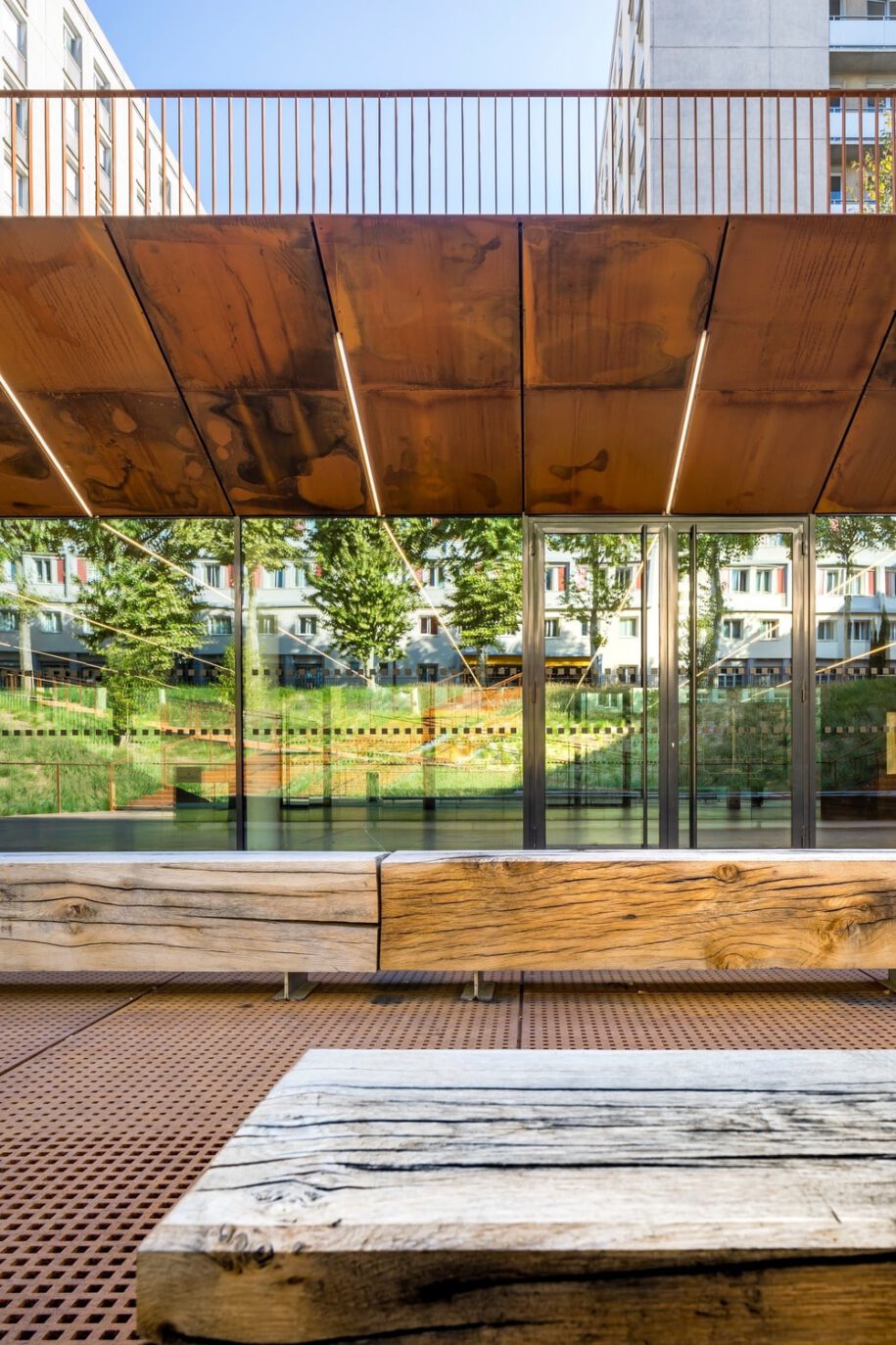
For the interior design of the reading rooms in the library, we have chosen to position the aisles along the façades to allow the light to freely enter the building and thus free up the view of the succession of windows. A monumental winding staircase marks the entrance to the library at both the garden level and the ground floor up to the first floor. Its size makes it a remarkable architectural feature and reveals the volume of the building and the height of a whole section.
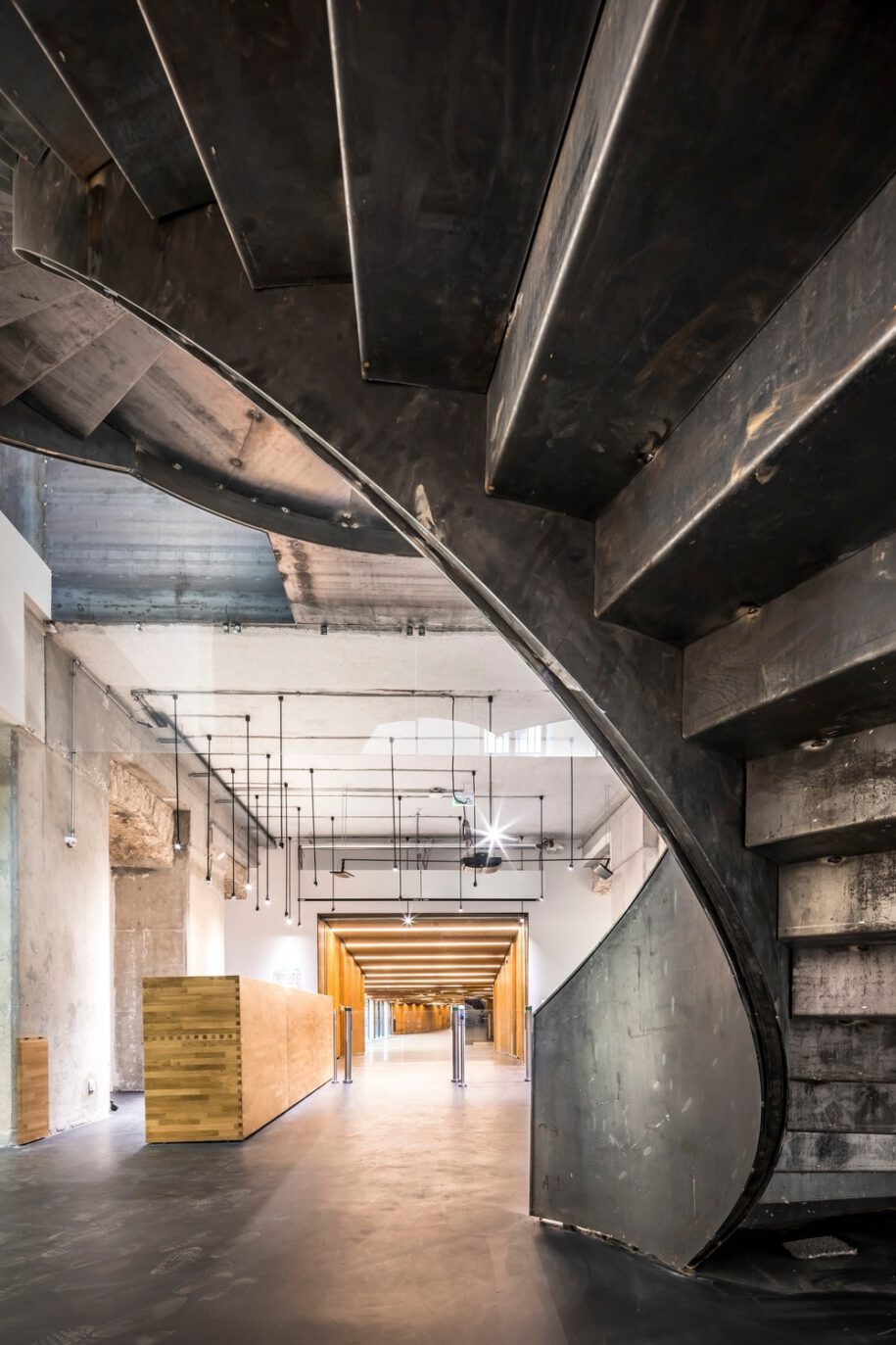
The eastern end of the connecting gallery of the Lourcine site leads to a section that opens onto the Rue Broca. The reception level thus provides a direct link with the outside and the street at garden level. In the upper floors, a wide and generous walkway filled with natural light provides the opportunity to create a meeting place over several floors: each floor is thus linked by the main, open staircase that provides direct access to the classrooms without taking the closed staircases. The garden level gallery, linked to these walkways, transforms them into places to share and exchange in which a number of alcoves have been built for working: building 2 thus becomes a sort of “learning centre” perfectly adapted to new ways of learning and teaching.
The 500-seat amphitheatre, a major feature of the Lourcine campus, is installed at the lowest point of the parade ground where the old car park was and along the north / south axis of the site. It is accessed through a gallery entirely covered with self-weathering steel that provides a continuity with the central esplanade.
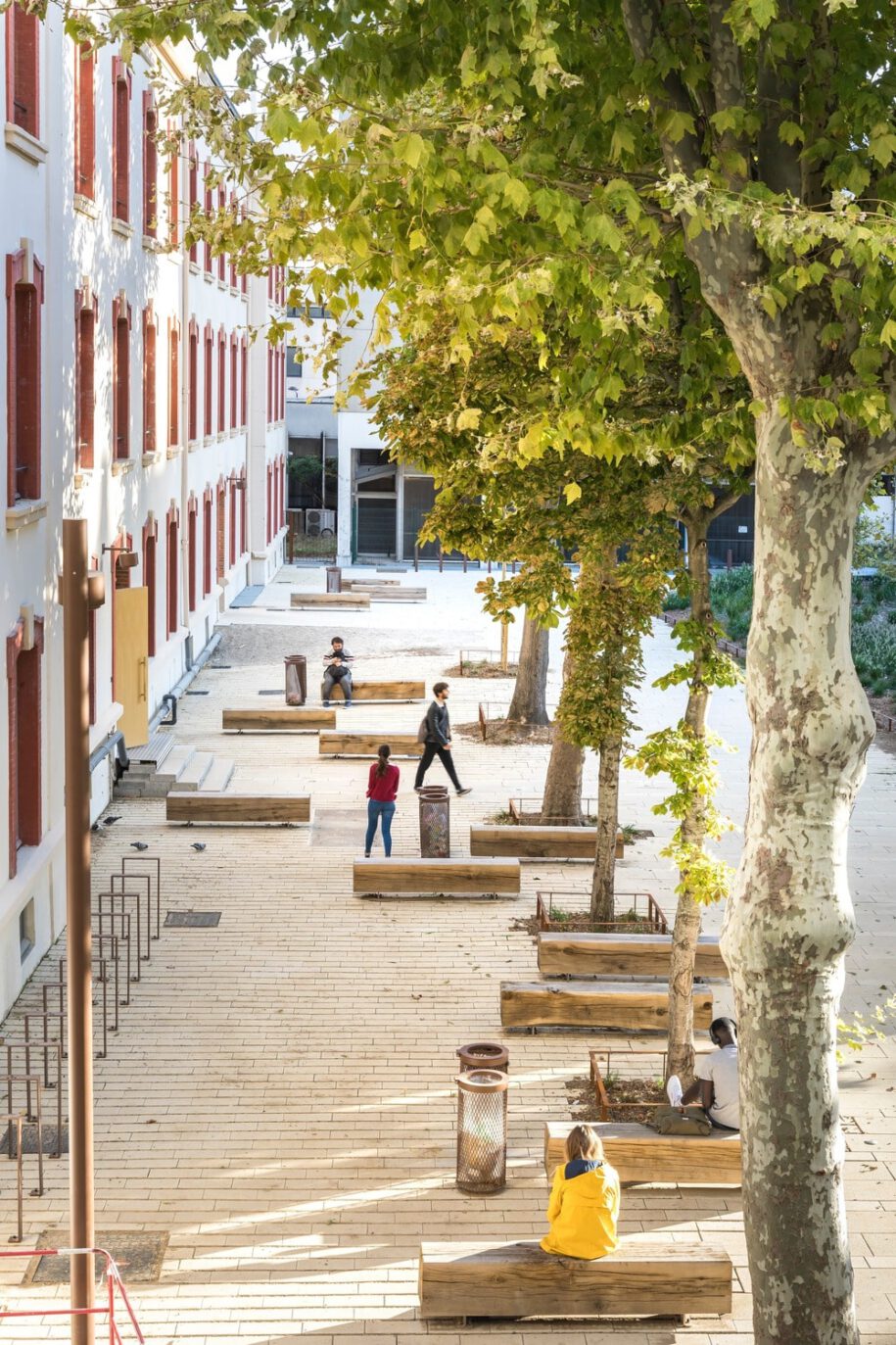
The self-weathering steel, a warm, vibrant and changing material, accompanies the visitor throughout all the outside public areas and extends right into the interior. It is a skin that shows the marks of time and embodies the new face of the Lourcine campus.
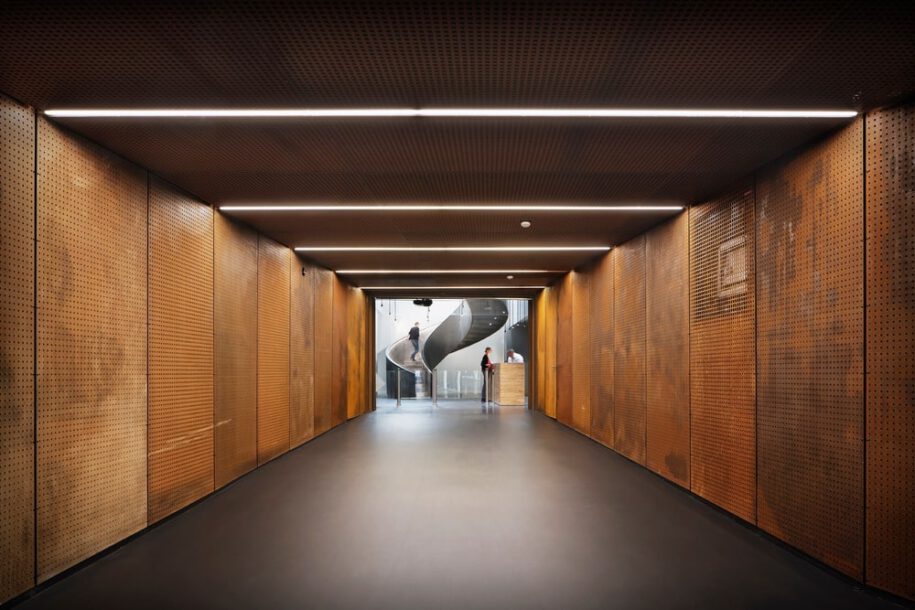
The view of the square at eye level makes it possible to clearly distinguish between the vertical elements and the existing plane trees. The crowns of the existing and future trees will be pruned at a high level in order to preserve and emphasise the perspectives and the continuity provided by the creation of a new, uniform ground cover. The trees form a vertical pattern that is in many ways the very identity of the square. By considering the esplanade and the surroundings of the buildings and the fire brigade access as a single horizontal element of the landscape, and by creating a gentle and continuous slope, we sought to reinforce the status of the square as a unifying and not divisive force. By blurring the edges at ground level, the whole of this horizontal landscape bleeds into a homogeneous horizon that does not interfere with the view of the tops of the plane trees and the existing buildings located around the square.
Facts & Credits
Project title Campus Port Royal, Centre Lourcine
Client Epaurif for the Université Paris 1 Panthéon-Sorbonne
Architecture & Design ChartierDalix Architects
Team Egis Bâtiment (gen. contracting), Elioth (Hqe), Acoustb (acoustics), DHpaysage, (landscaping), Grahal (heritage)
Area 9,710 m2
Programme 500 seat lecture theater, 27 teaching rooms, 2,000 m² library, 1,500 m² offices and 2 service apartments
Date of completion June 2019
Prize Jury Prize Frame Awards 2020
READ ALSO: Mαρία Παπαφίγκου - Ooak Architects | ESO 2020